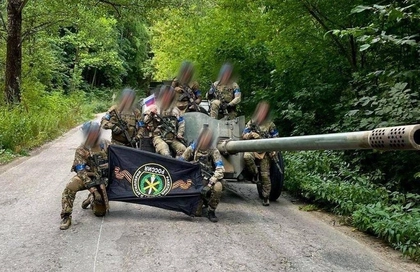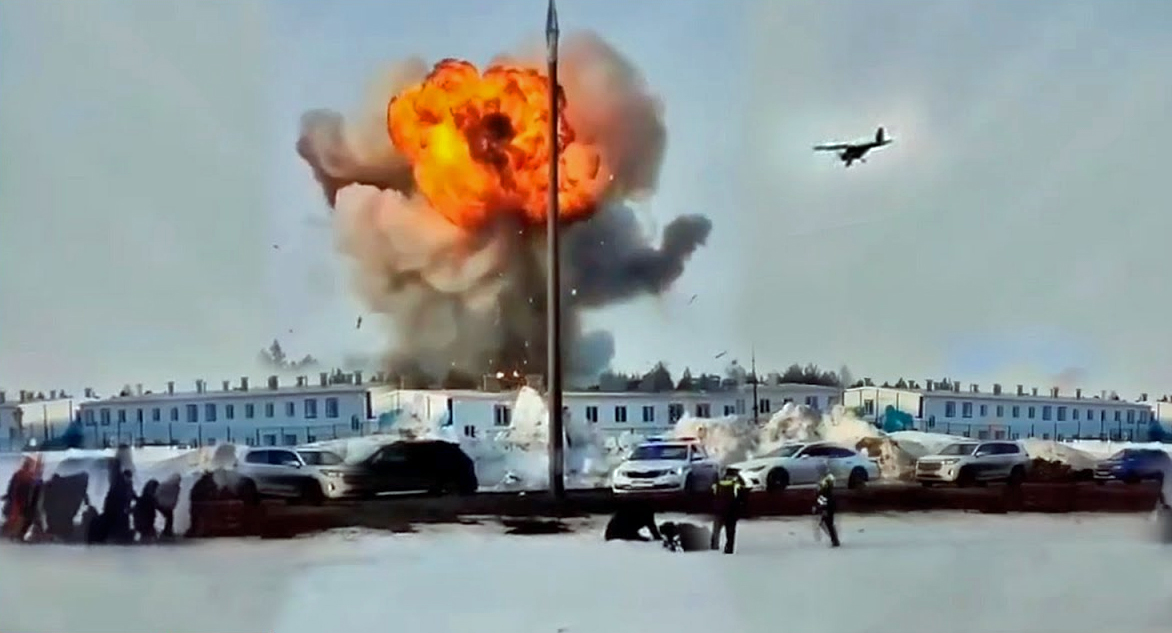Ukraine’s military just reported its forces came within an ace of setting a new single-day record for Russian artillery pieces destroyed over 24 hours. If the trend continues, the Russian army should run out of cannon pretty soon, assuming Kyiv’s official kill counts of the war’s most critical weapons system – big howitzers and cannon – really are accurate.
On Wednesday, Sept. 13, the General Staff of the Armed Forces of Ukraine (AFU) in its morning report estimated that over the previous day, Ukrainian forces had destroyed 42 Russian artillery systems, a fairly general term including mortars, towed cannon and self-propelled artillery pieces – the last an expensive weapon that looks like a tank but is designed to shoot explosive shells long distances.
JOIN US ON TELEGRAM
Follow our coverage of the war on the @Kyivpost_official.
According to the AFU, that level of destruction of Russian artillery was just two systems short of the one-day record for the entire war – set, on June 23, at the height of a series of ultimately unsuccessful AFU attacks to score a quick breakthrough of Russian fortifications south of Orikhiv. On that day, across the front, the AFU claimed it had destroyed 44 Russian guns and howitzers over 24 hours.
Ukrainian army leadership in July shifted tactics from an attempted quick breakthrough with the objective of encircling Russian forces and penetrating deep into Russian defenses, to an attrition strategy. Now in effect for two months, that approach has seen moderate success with Ukrainian infantry advancing in short jumps 500 to 1000 meters at a time.

Ukraine’s Elite Special Ops: Top Missions of 2024 – From Black Sea to Kursk
Most of the killing is done by Ukrainian artillery exploiting its advantages of longer-ranged cannon, provided by NATO states, and swarms of observation drones largely purchased for the AFU by civilian donors, to systematically pound Russian positions and, from a safe distance, destroy shorter-ranged Russian artillery pieces.
Keeping count
According data compiled by the independent Icelandic researcher Ragnar Gudmundsson, Ukrainian claims of Russian artillery destroyed jumped from around 10 to 12 Russian artillery systems thought to have been taken out daily in the first 12 months of the war, prior to the kickoff of the AFU’s southern offensive, to around 20 to 25 from mid-May through mid-September.
The Ukrainian military does not allow independent observers to frontline positions and publishes only anecdotal evidence – almost always drone videos, in support of all the Russian artillery pieces it claims it is blowing up. Kremlin information platforms with propaganda agendas regularly report Ukrainian artillery missing its targets or wasting expensive shells produced by NATO nations on wooden mock-ups.
Ukrainian soldiers of the CODE 9.2 unit destroyed millions of dollars' worth of Russian equipment with a drone strike in the Bakhmut sector.
— Euromaidan Press (@EuromaidanPress) September 13, 2023
One drone attack destroyed: an artillery system, an anti-tank gun "Rapier", and a field depot with ammunition.… pic.twitter.com/9mWFFSjV6S
The AFU, however, is unlikely to be intentionally faking its destroyed artillery numbers because it bases its kill estimates overwhelmingly on drone video checked by multiple analysts, and because Ukrainian service personnel carry into military service a longstanding tradition of individual citizens’ calling out official lies.
Those citizen soldiers would, very likely, identify and quickly make public any serious attempt by Ukrainian army leadership to fiddle with Russian equipment kill claims – independent Ukrainian military information platforms and Kyiv Post research mostly agree.
An example of the scrupulous attention paid by Ukrainian combat units to official Kyiv statements about combat outcomes played out in the national media on Tuesday when Hanna Maliar, Ukraine’s Deputy Defense Minister, announced that AFU forces had fully liberated the village of Andriivka. Hours later a very public message by soldiers from 3rd Assault Brigade (whose infantrymen were still mopping up at the time) pointed out to Maliar, by name, that fighting actually still was in progress, the situation was still very dangerous and that she and all central government officials should not make assessments about how the war is going prior to verifying with soldiers.
How much have the Russians really lost?
In any case, 18 months of the AFU reporting every day how many Russian artillery pieces were destroyed in the previous 24 hours has chalked up a total of 5,972 Russian mortars, towed cannon and howitzers, and self-propelled artillery pieces supposedly destroyed by Ukrainian forces since the first day of the war.
Estimates vary on how much artillery the Russian army started the war with. In an analysis published less than two weeks before Russia’s full-scale invasion of Ukraine, the Turkish Andalolu news agency reported the Kremlin had at its disposal a maximum of 6,574 self-propelled artillery pieces, and 7,571 towed artillery pieces.
Other independent research groups, pointing to chronic over-reporting of mission-ready equipment within the Russian military as well as weak maintenance resources across the Russian force, have published more moderate estimates of real Russian artillery strength at the outset of the war, usually putting numbers at about 2,200 systems actually in service and another 5,000 systems in reserve.
By those conservative estimates of Russian artillery systems on balance at the start of the war, if the General Staff’s numbers on Russian artillery losses over the past 18 months were fully accurate down to the very last gun, the Russian army should now have something close to zero cannon and howitzers left on balance.
If the destruction of Russian artillery continues at a pace consistent with losses reported by the General Staff, no matter how much artillery the Kremlin started the war with, then even by the generous estimates of Russian army resources, the Kremlin will run out of cannon sometime in 2025, at least on paper.
Kremlin-controlled media has claimed that Russian industry is cranking up to fill in losses of guns and howitzers. Official Ukrainian army numbers account neither for artillery systems supposedly destroyed but subsequently repaired, nor analyst error. But a falling Russian army capacity to send large masses of shells downrange has been widely visible for months.
Currently, the Ukrainian artillery is generally considered by AFU personnel to out-range its Russian opponent and to hold a clear battlefield advantage. Nevertheless, Russian guns remain capable of concentrating fires on selected sections of the front for short periods.
You can also highlight the text and press Ctrl + Enter






